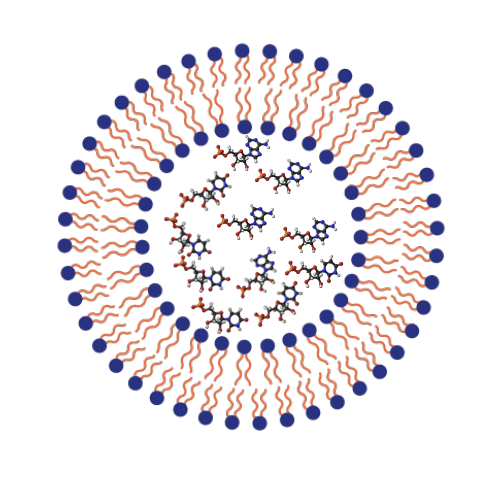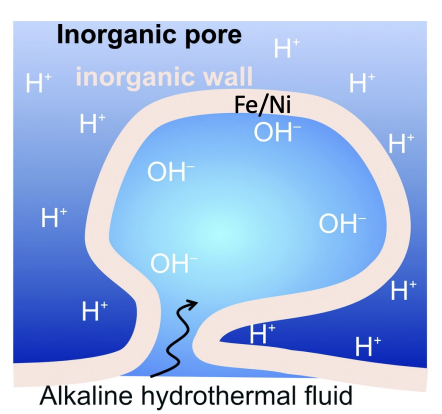Building a phenotype - cell theory
1/17
There's no tags or description
Looks like no tags are added yet.
Name | Mastery | Learn | Test | Matching | Spaced |
|---|
No study sessions yet.
18 Terms
What key features comprise a cell
Genetic systems allowing hereditary, replication & metabolism, compartmentatlisation
What is cell theory
All organisms are composed of one or more cells
Cells are the basic unit of life
All cells arrive from pre-existing cells —> leading back to LUCA
Theory of how life evolved in the molecular soup
Hostile volcanic environment, frequent storms including UV light and lightning that would have been catalysing reactions of atmospheric gases
Key biological precursor molecules like amino acids, sugars, nucleobases form and fall into oceans
Condensation by chance into polymers
Possibility of a polymer catalysing own replication
Self-replicating polymer would dominance molecular soup and begin evolving
Problem with DNA as the first self-replicating molecule
DNA cannot replicate itself as it requires protein catalysts
Could RNA be the first self-replicating molecule
Is not strictly self-replicating as it requires another RNA molecule to act as a template, but one RNA can make a copy of another
Catalytic RNA (ribozymes) can catalyse synthesis of a new RNA molecule
2 problems with making RNA in a molecular soup
Dilution very weak, chance of two nucleotides meeting to form a chain eventually forming RNA is very small
RNA is unstable in water. Ocean favours hydrolysis and condensation is needed to convert nucleotides to RNA
Theory of where RNA could have originated
Clay mineral layers
Why would clay mineral layers be the perfect site for prebiotic RNA
All the molecules needed to make RNA (nucleotides, nucleobases, phosphates, sugars) bind to surface of clay-silicate minerals and become concentrated together in the layers - greater chance of molecules meeting
Repeated cycles of wetting and drying, condensation becomes favoured
Problems with RNA world theory
Dependence on the wet-dry cycle, really really slow
Lots of molecules, especially lots of sugars, would be present in primordial soup —> why is RNA made out of ribose specifically
Only ticks the box of hereditary, unclear how RNA would lead to cell membrane, metabolism, and cells
What are membranes made out of and how
Amphiphile molecules - molecule with both polar and non-polar properties
They are self-assembling, spontaneously form in the presence of water (which is polar)
Types of membrane structures
Micelles, vesicles, bilayers
Could phospholipids have formed prebiotically
No too complex, but simpler amphiphiles may have been present and self-assembled into vesicles and micelles
Evidence of membranes forming
Experiment where nucleotides and lipids heated and concentrated until total dehydration micelles formed and then fused with one another to create multilamellar films with nucleotides inside
Then after dehydration and rehydration cycles RNA molecules were formed, ending up with RNA inside vesicles

What conditions are needed for spontaneous metabolism
High temperature
High pressure
Redox active metals to act as catalysts (e.g. iron or nickel)
Why are alkaline smokers thought to be potential sources of life
They form due to exposure of the mantle to seawater, reaction called serpentinisation occurs forming new minerals - with minerals like iron, nickel
The reactions generates heat, hydrogen gas, hydroxide ions
There is high pressure at the bottom of the ocean
Sets up all the conditions for spontaneous metabolism - between hydrogen gas and carbon dioxide dissolved in the water
How are hydrogen gas and carbon dioxide made to react
CO2 reduced to organic hydrocarbons by the proton gradient, capturing electrons from H2. FeNiS and FeS act as catalysts
Proton gradient needs to be established so enzymes can capture electrons, done using an inorganic Fe/Ni wall with acidic seawater on the outside and alkaline hydrothermal fluid coming up

Problems with the alkaline smokers origin theory
Self-assembling molecules eventually form, wouldn’t they stop molecules interacting with the metals?
How did this basic chemistry evolve into non-enzymatic metabolism and complex molecules?
Possible process of cells forming from primitive membranes with amino acids and FeS crystals
Amino acids bind to FeS crystals
Some amino acids would be hydrophobic, could embed in cell membrane
Then act as catalyst to produce the proton gradient across the cell membrane, driving the reduction of CO2 into hydrocarbons and more amino acids and fatty acids produced
Fatty acids produced would increase the cell membrane, at one point would divide into two due to the size —> cell replication
Cells with the best catalysts (fastest growth) ‘selected’ for